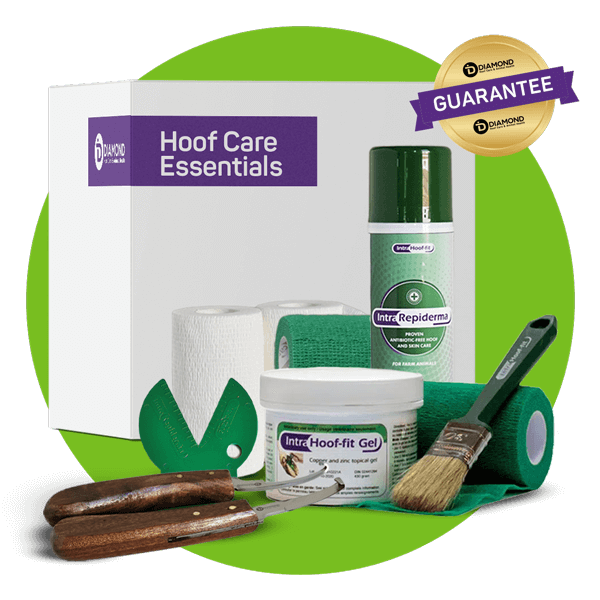Hoof Clips Newsletter
Hello and welcome to the Hoof Clips Newsletter – read by 5,000 Hoof Care professionals around the world. Join the ~1,200 hoof care pros if you’re not already signed up.

I am frequently asked at tradeshows, “Where should I start addressing lameness in my herd?”
There have been many great conversations, and by ‘just’ chatting about the puzzle pieces to manage hoof health, the light at the end of the tunnel often shows up—or better yet, the sun arises on the horizon, and a new day has come.
One of the conversations at our last tradeshow was with Linda, a dedicated farmer who milks about 80 cows. She’s been facing challenges with lameness in her herd and shared some insights with us.
I asked Linda how many of her cows are currently lame, and she mentioned that about 25 cows are affected. When I inquired about the cause, she believed it was mostly due to hairy warts (Digital Dermatitis) and some ulcers.
To tackle this issue, Linda has been proactive. She tried washing the hooves in the parlour, bringing in a hoof trimmer a couple of times per year and running an acidified copper sulphate footbath four days per week. However, she admitted that she doesn’t lift hooves because she lacks a proper chute and feels unsafe doing it in the parlour. Moreover, she feels uncertain about the proper procedure and often feels lost.
When I asked how she measures the success of her footbath, Linda said that she gauges its effectiveness by observing the number of lame cows. Unfortunately, she noted that this method hasn’t shown the desired results lately.
A few highlights from this conversation

Read the blog on the case for keeping hoof trimming records.

Linda became energized and motivated when we started chatting about the protocol we use for many of our client farms. Let’s dive into this a bit—at any time, hit reply to this email and share your story.
As a side note, perhaps you don’t have lame cows and have it under control—kudos to you, really! This email is probably not as beneficial to you, but please share it with your farmer friends: many of your fellow farmers have 25-30% lame cows and lose thousands of dollars annually because of hoof issues.
Let me put together a few ‘high-impact’ items for you and Linda, who are looking for solutions to keep hoof health a priority.
Set up a treatment and inspection area
A cow is not a horse. What do I mean by that? Well, I often envied the farriers—it always looked so simple for them to grab and hold a horse’s hoof. But with cows, it’s a different story. We need some type of chute to hold the hoof while trimming.
On our hoof trimming chute resource page, you can explore different options and setups to make trimming easier. Trying to hold a cow and grab a foot freehand for long isn’t practical or safe.
Stay safe and practical by investing in a simple chute or a more advanced version. Trust me, you won’t regret it.
Hoof diseases and treatment options
Diagnosing hoof issues correctly is the first step to winning the battle against lameness. Linda struggled to identify what was wrong with her cows. If hoof diseases are not correctly diagnosed, it is also difficult to accurately benchmark and score for improvements. Using our hoof disease chart, she can now easily identify and treat the issues more effectively.
Our hoof disease chart not only lists different hoof diseases but also includes pictures to help you identify them accurately. You can still download a printable hoof disease chart for your barn if you don’t have a copy.
To further support your hoof care routine, I’ve put together a starter kit that includes all the essential tools you need: two hoof knives, a jar of Hoof-fit Gel for treating hairy warts (DD), a can of Repiderma, and some rolls of wraps. With these tools, you’ll be well-equipped to handle most hoof issues that come your way.

Reach out to a professional hoof trimmer
Linda shared that she uses her hoof trimmer twice a year, but she also mentioned that it’s probably not enough to keep her herd in optimal condition. This got me thinking about the importance of having a systemized approach to hoof trimming.
For instance, trimming during early lactation is not advisable. I’ve seen many farms struggle with the time and proper setup to handle all the hoof trimming themselves. It’s a big task, and it can be overwhelming.
That’s where a professional hoof trimmer comes in. They bring expertise and the right equipment to ensure the job is done thoroughly and efficiently. So, if you’re feeling like Linda and realizing that twice a year might not be enough, it might be time to consider bringing in some professional help.
Sometimes, changing the hoof trimming schedule can significantly improve hoof health. Instead of trimming every cow twice a year, try trimming a portion of the herd every month or every other month. This way, you can keep a closer eye on the problem cows and address issues more promptly.
In the next Hoof Clips, I will go deeper into the review and update of prevention protocols.
Let me know if you have any questions or feedback. I will answer all emails personally.
Happy trimmings,
Koos
